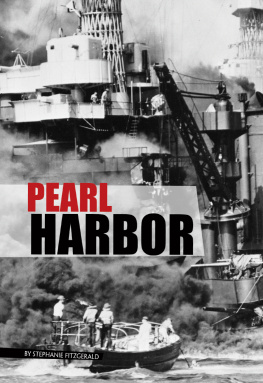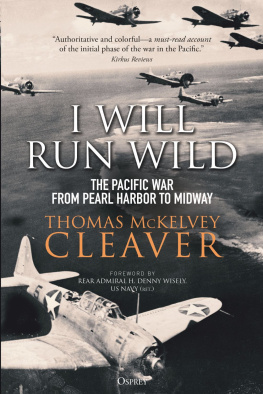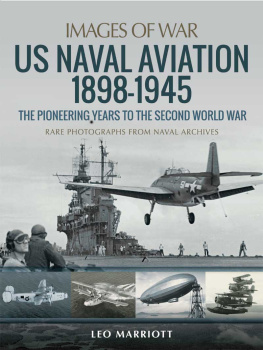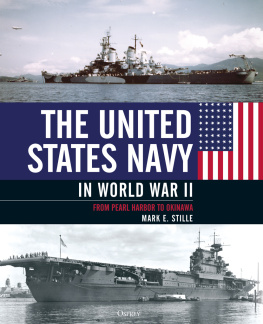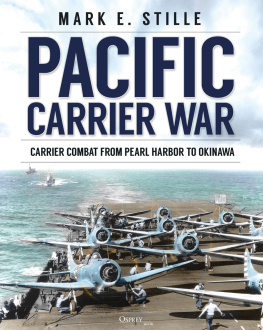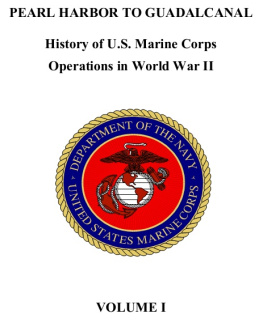
The First Team


THE FIRST TEAM

Pacific Naval Air Combat from Pearl Harbor to Midway
By John B. Lundstrom
Naval Institute Press
Annapolis, Maryland
Naval Institute Press
291 Wood Road
Annapolis, MD 21402
1984 by the United States Naval Institute
Reprinted with updates and corrections 1990
All rights reserved. No part of this book may be reproduced or utilized in any form or by any means, electronic or mechanical, including photocopying and recording, or by any information storage and retrieval system, without permission in writing from the publisher.
First Naval Institute Press paperback edition, 2005
ISBN 13: 978-1-61251-166-5
The Library of Congress has cataloged the hardcover edition as follows:
Lundstrom, John B.
The first team.
Bibliography: p.
Includes index.
1. World War, 19391945Aerial operations, American.
2. World War, 19391945Naval operations, American.
3. World War, 19391945CampaignsPacific Ocean.
I. Title.
D790.L8 1984 940.544973 84-9822
12 11 10 09 9 8 7 6 5 4
Dedicated to the memory of
Bernard Lundstrom, my father
and
Roger M. Rice, my brother-in-law and friend

Contents



The wit and comradery that the British muster so well in uncomfortable circumstances sparkles in a ditty made up by Royal New Zealand Air Force types to honor the USS Yorktown (CV-5) at a trying time of her existence. Our flattop had put in at Tonga Tabus out-of-the-way anchorage so divers could check the extent of underwater damage received in the Coral Sea battle. As an added layer of security for the ship during this delicate operation, some of us of her air group were temporarily based ashore in readiness to launch from a nearby meadow that served as an airfield. We listened in good heart as the serenade went on extolling that fine tidy ship. We were pleasantly surprised that here were spontaneous sentiments that matched so well our private feelings for our stout ship, our home plate in fighter director lingo. Bruised but not bested, she was as clean and hearty as we could make her. There was plenty of fight left in that high-stepping girl. The divers determined that with some innovative patching she could fight some moreand she would!
By the time of this visit to Tonga Tabu, Yorktowners impression of the war and their part in it was beginning to pall. Clearly, Japan was taking over in the western Pacific. The Yorktown and the Lexington had presented the only serious opposition to Imperial plans. Their assignment was simple: react, try to stop the most serious advances. The reactive role, aside from its built-in perils, is depressing and, over a period of time, is mighty rough on the good-humor program, especially with no end in sight. The Japanese were winning, and they seemed to be tireless. When the Lexington, after several weeks absence, rejoined us in our own piece of the Coral Sea, our spirits leaped only to dive to a new low as we watched her flaming death throes and felt the bone-shattering blast that sent her to the bottom. Still there was pride and plenty of spirit in the Yorktown. We had carried the fight to the foe and had stopped a baleful threat to Australia. We knew great issues depended on our carrying on. There was impressive confirmation of this idea in the orders that put the Yorktown back to sea for the Midway battle, a patched-up ship and a scratched-together air group. There were guarded feelings about our assignment, but it was obvious our combat specialties were very much in demand.
For her Japanese attackers, the Yorktown turned out to be the whole U.S. fleet. She absorbed all their attentions which might have been inflicted on other ships. Her people mourn her loss but bask in the knowledge they left deep scars on the Imperial Fleet and added to her good name. For her attacks on the Japanese carriers, the Yorktowns part amounted to a good half of TF 16/17 effort, sharing it only with the Enterprise. Thus, the Yorktown put in a rousing good days work, and her air group carried on from surviving decks until the battle was done. This is history that can read like a good old sea yarn, yet it has been waiting forty years and some for a scholar of John Lundstroms persistence to put it together as such.
Study of carrier actions in the first half year of war in the Pacific is frustrating to one who searches for credible reasons that can account for the extraordinary reversal of fortunes of the chief contenders battling at that time. Such study is less a search and more a groping in the murk where combat results do not follow the logic of numbers, experience, equipment, and whatever else might tangibly shape outcome. In a rapid succession of events toward the end of this period, our carrier forces, consistently the underdogs, came off winners. Since this result has much the aspect of an act of God, historians, with wondrous restraint, seem to have been inclined to let it go at that. Whatever the reason may have been, there remains much to be told about what was really going on in our carriers in these crucial months. This is a grievous deficiency to afflict the historical record of carrier warfare in the very months our ships sealed the fate of Japans seaborne air power and pushed her onto the road to defeat.
The luck, miracles, and outright sacrificial performances that made May and June 1942 banner months for our war fortunes in the Pacific are mingled in sources and records that until now have wanted the attentions of a keen and resourceful scholar. Heretofore, accounts of this period have tended to be broad-brush, imprecise, and wanting in detail. Or, at another extreme there are exhaustive treatments of colorful doings taken in isolation with little or no reference to what went before or came afterward. These kinds of treatment obscure the important fact that in our aircraft carriers throughout the period, significant organizational, personnel, and material factors were at work. Some were fair solutions to severe problems; some were unadulterated trouble. In any case, they did affect the ships and squadrons. These factors must be identified and considered alongside combat events if one is to understand and grade efforts, accomplishments, and failures that shaped results.
As a fighter pilot veteran of the Yorktowns entire combat career, her last year afloat, I am very grateful to John Lundstrom for the chance he gave me to help dig out and expose to light material that shows how it was in the flattops in the early months of the war in the Pacific. He gave me a chance to do something better than grumpily watching time run out, fuming the while over deficiencies of historians treatment of this period. He also afforded me some tantalizing glimpses of material gleaned from Japanese sources and from hitherto untapped sources here at home. When it is all assembled, the account permits analysis, then assessment of the extent to which results were shaped by such things as luck, miraculous intervention, the performance of men, and, yes, the singular part the
Next page


